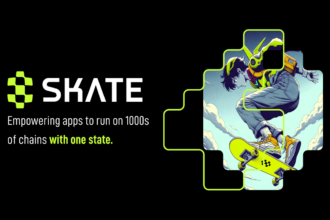With digital solutions and online transactions replacing physical tasks and cash payments, the COVID-19 pandemic has been a game changer for the fintech industry. To that end, software as a service (SaaS) solutions have enabled many fintech ventures to bridge the gap in access to services and cater to the fast evolving consumer demand. Many SaaS-based fintech ventures were key in helping banks and insurance companies boost customer experience with unique solutions.
In that context, Gradatim IT Ventures is among the leading SaaS companies in India that has been helping banking and insurance companies keep up with changes in customer-centric technologies and ramp up their products with digitisation. Launched in 2009 by Prakash Viswanathan and Manish Verma, Gradatim was initially conceptualised as a banking back-office joint venture with a bank. In 2015, the company pivoted to evolve as a provider of customer-centric SaaS products to the banking, insurance and pension industry.
Talking about what led the duo to pivot, Prakash Viswanathan, who’s the co-founder and CEO of the company, says, “While running the banking back-office, we noticed that mid-office and back-office systems of financial institutions are often very rigid. The lack of flexibility is the main reason why financial institutions often fail in meeting the digital needs of new-age tech-savvy consumers. The emergence of cloud computing and the resulting architecture improvements led us to work on a model of flexible core systems. And, that’s how Gradatim evolved.”
Bridging gaps in access to digital solutions
Describing the company’s scope of work, Prakash says that Gradatim’s technology vision is to focus on the convergence of digital channels, processes and entities in such a manner that data can seamlessly flow through all core processes.
At the same time, Prakash and Manish realised that as a B2B SaaS company, they were in the business of helping their customers explore digital solutions and hence, they too needed a strong online presence. The realisation pushed the two to opt for a .in domain name and the decision has helped them immensely in supporting their business and driving impact both in India as well as globally.
The two add that their decision was also driven partly by the consideration that they wanted to establish themselves as an Indian entity. “India is both an opportunity and strength. The Indian IT sector has a very favorable brand recognition world-wide. For us the India brand is and will continue to be valuable,” says Prakash.
The National Internet Exchange of India (NIXI) has helped hundreds of businesses across sectors and sizes distinguish themselves as a brand with its .in or .Bharat domain — which is India’s Country Code Top Level Domain (ccTLD). It’s among the few internet exchanges in the world to offer a ccTLD in multiple languages.
Delving into the early challenges that the Bengaluru-based company faced in its journey, Prakash says that initially, it was tough for the team to convince insurance companies about the benefits that cloud-based solutions could ensure. “Most of them told us: we haven’t even migrated our email to the cloud, how can we migrate the core system to cloud?” he adds. The company tackled the challenge by working with cloud services providers like Microsoft and AWS to convince their clients about how secure cloud-based systems were.
Another challenge that Gradatim faced while pivoting was the concern over a lack of verticalisation. The team had decided to build a cross-selling platform that dealt with various insurance verticals. “Be it fire, health, life or fire, each insurance vertical has different requirements. So, clients were hesitant to work with us and asked us to come back once our model was verticalised. We then decided to add admin functionalities for each of these vertical,” explains Prakash.
Driving impact with a digital push
Prakash believes that the reason why the insurance industry lagged in digital adoption was that they thought that their balance sheets alone would take them through. “They always thought that because of their size they would continue to grow. COVID-19 changed that perception and has accelerated digital adoption in the insurance industry. Our clients are now of the view that digital adoption is irreversible. Moreover, data and analytics are helping banks and insurance companies ramp up their mid and back-office operations to grow despite the crisis,” he says.
Talking about Gradatim’s USP, Prakash says, “We have a model which enables companies to derive value from their existing codes. When I bring in a cloud-based system, it does not replace your system’s existing strengths. Instead, it adds value to a legacy system.”
Along the journey, having a .in extension name has enabled the company to establish itself as an Indian IT company and draw global attention. “I don’t think we need to hard sell ourselves. The brand itself conveys that we are based out of India.”
In the near future, the company is planning to expand its operations to other Asian markets. “While we believe that India still has a lot of potential, we plan to focus on other Asian countries too. This is mainly because we think that the challenges that we might have to face in these countries will be far less complex than the ones we tackled in India,” Prakash adds.
















